
Enquiries, prices and samples, email info@silvermaze.co.uk

Coffee Break
The Eye, Shard and Gherkin, are London landmarks of the millennium, and sit surprisingly in harmony with the likes of St Paul’s by Christopher Wren. However, will they ever match the history of our iconic buildings of yesteryear?
We dig deep into London’s past and using our 3D Modern and Classic maps bring you some interesting historical snippets from our capital’s past.
So take time out, pour that coffee and peruse them. Should you feel something should be added, send us an email, we would be delighted to include it. We hope you enjoy it and should you like something similar for your city or town let us know.
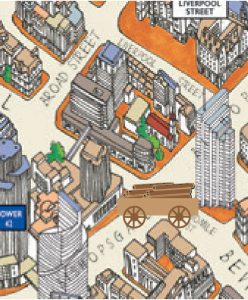
Bishopsgate
In the building of London during Saxon times, Bishop Erkenwald charged a toll of one piece of timber from each cartload using the gate in the London Wall. Hence the name Bishop’s gate.

Bow Street
In 1750 Henry Fielding introduced the first police force, the Bow Street Runners. Part of their uniform was a red waistcoat hence they became known by the nickname ‘The Robin Redbreasts’.
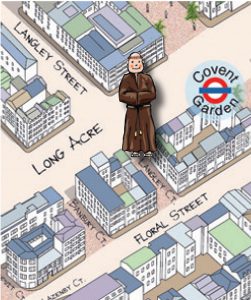
Covent Garden
Covent Garden was originally a Convent incorporating a farm known as the ‘Garden’ which was tended by monks. The farm consisted of two fields, the short acre and the long acre from whence the street takes it’s name.
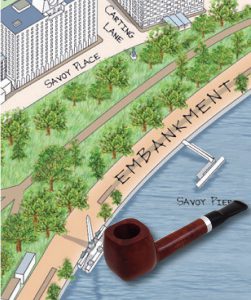
Cleopatra's Needle
Beneath Cleopatra’s Needle is buried a wide collection of artefacts for future historians. These include: a set of period coinage, bibles, Bradshaw’s Railway Guide, baby’s bottle, smokers pipe and cigars.

Drury Lane
On the 7th June 1665 Samuel Pepys wrote in his diary that he had noticed red crosses painted on the doors of homes in Drury Lane. This was the first signs of the Great Plague known as the Black Death.
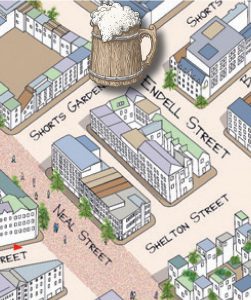
Endell Street
Condemned prisoners being transported in open carts from Newgate Prison to the hangman’s noose at Tyburn (Marble Arch), stopped for a free beer at ‘The Bowl’ public house in Endell Street.
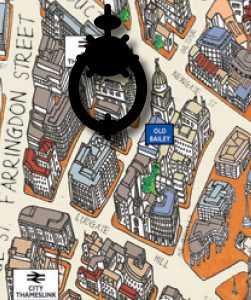
Old Bailey
“Black as Newgate’s Knocker” meaning dark,dank and sinister, the term given to Newgate Prison where prisoners were held awaiting execution at Tyburn. It was sited on the corner of Newgate Street and Old Bailey.
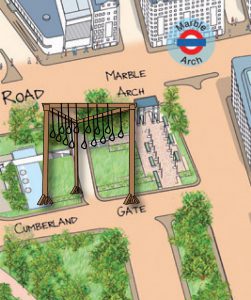
Marble Arch
Tyburn, London’s site of execution between 1571 and 1783 where over 60,000 were hung in a carnival atmosphere. Until later times the cause of death was strangulation with friends and relations pulling the victim by the feet to hasten death.
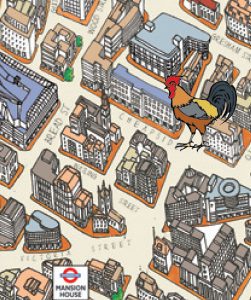
Cheapside
Cheapside derives from the Saxon ‘ceap’ meaning to sell or barter. From its’ earliest history Cheapside was a market and the side street, Poultry was the area in the market where poultry was sold.
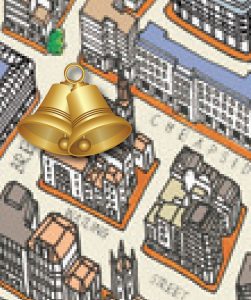
St Mary Le Bow
Situated in Cheapside a church has stood here since Saxon times. It was rebuilt in 1666 after the Great Fire of London. To be born with the sound of the ‘Bow Bells’ means you are true London Cockney.
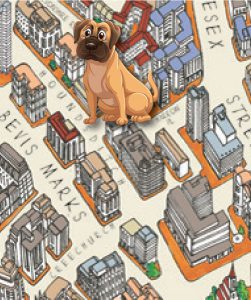
Houndsditch
The name Houndsditch is thought to have derived from the ditch that surrounded the city wall into which filth including dead dogs (hounds) were thrown.
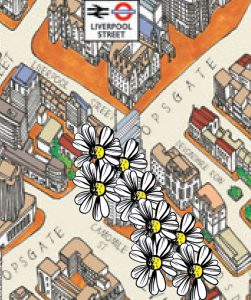
Camomile Street
Camomile Street derives it’s name when in the Middle ages there was a camomile-covered wasteland here. The herb thought to help numerous health problems was gathered and sold in local markets.
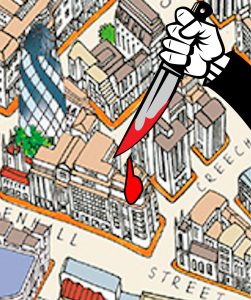
Mitre Square
30th September 1888, Catherine Eddows 46, was ‘Jack the Ripper’s, forth victim; the only one murdered within the City walls. Her mutilated body was found at 1.45am after she was released at 1am from Bishopsgate Police Station for being drunk.
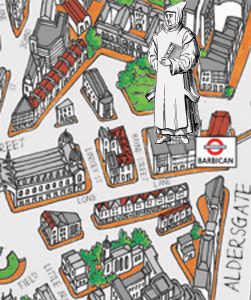
Charterhouse
The Carthusian Priory or Charterhouse was built here in 1371 over the burial site of some 50,000 victims of the Black Death. The Reformation closed it in 1537. The Prior was hanged, drawn and quartered, nine monks starved to death in Newgate Prison and one was hanged.
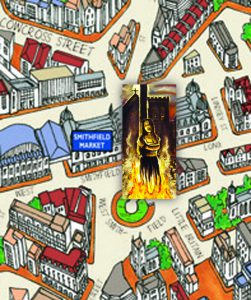
Smithfield
Smithfield today’s meat market was the site where heretics and other religious dissidents were burnt at the stake. In 1532 Richard Rose, convicted of poisoning seventeen people and attempting to murder his master, the Bishop of Lancaster, was boiled alive.
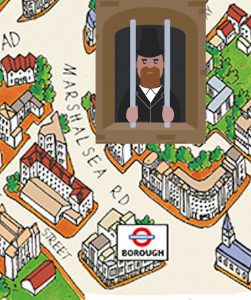
Marshalsea Road
Marshalsea Prison, known as the debtors prison was sited here and where Charles Dickens father was incarcerated in 1824. No doubt it was the author’s experience that led to the novel Little Dorrit.

Paris Gardens
Circa 1530 William Baselly converted Paris Gardens Manor into a casino with cards, dice and bowling alley. In 1536 its success caused new owner Henry VIII to raise rents from £10 – £52 per year. 520% increase
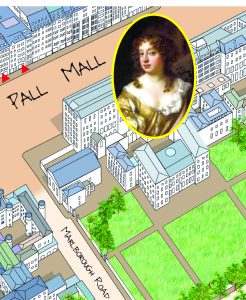
79 Pall Mall
Charles II gave the freehold of this property to his famous mistress Nell Gywnn, which is why it is now the only property on the south side of Pall Mall not owned by the Crown.
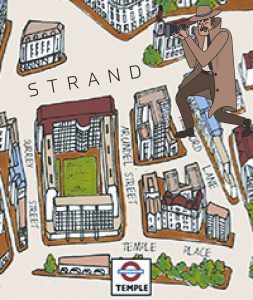
190 The Strand
In 1961, the Kroger spy-ring was uncovered in an antiquarian bookshop here. Many books were sent overseas containing UK secrets in microdots. Mr & Mrs Kroger received a twenty year sentence but were exchanged with the Soviet Union in 1969.
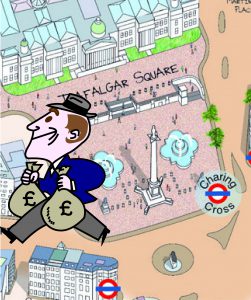
Trafalgar Square
During the 1920’s con-artist Arthur Ferguson posing as a civil servant sold an American Nelson’s Column for £6,000 (about £112,000 in 2024). He also ‘sold’ Buckingham Palace, Big Ben, The Whitehouse and the Statue of Liberty.
SILVERMAZE
30 Norden's Meadow
Wiveliscombe
Somerset TA4 2Jw
T 07753 302 806
E info@silvermaze.co.uk